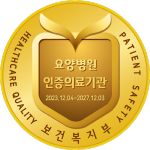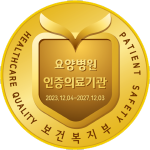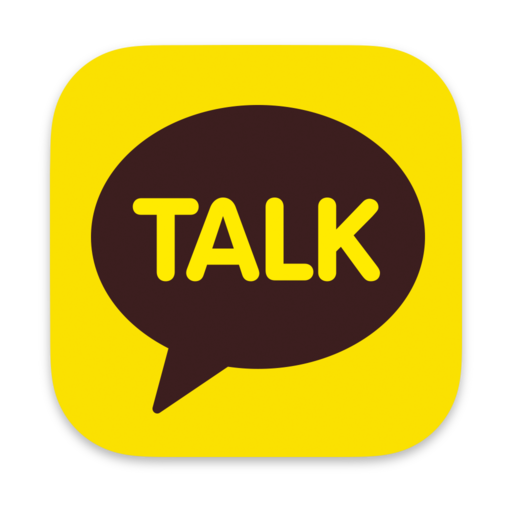Sage Advice About ADD Symptoms From The Age Of Five
페이지 정보

본문
 ADD Symptoms May Be Different For Boys and Girls
ADD Symptoms May Be Different For Boys and GirlsADD symptoms can be different for boys and girls. People who are primarily inattentional ADD are unable to focus and are easily distracted. They forget daily tasks.
Avoids or is not a fan of mental tasks that require sustained effort (e.g. chores and schoolwork). Sometimes, they forget to return phone calls or pay bills.
Inattentive ADD
Often overlooked, the predominantly inattentive form of ADHD can be one of the most frustrating symptoms of this condition. While everyone misplaces their keys or forgets to pay the phone bill from time to time, if these mistakes become frequent and interfere with your everyday functioning and well-being it could be a sign of inattentive ADD.
People with inattentive ADHD may struggle to see projects through to completion. Internal and external distractions are always present. Their home or work environment is usually messy or disorganized. They may also be chronically late to school or work. They miss appointments and frequently fail to locate important documents. Adults with ADD who are unable to pay attention have difficulty following written instructions and can make careless errors. They are prone to lose the flow of conversations and meetings and are often referred to as "space cadets" or "flaky."
This type of ADHD is observed in children who are easily distracted, daydreaming or looking out the window. They are easily distracted by daydreaming or looking at the sky. They often forget to finish their homework and have trouble following instructions or listening to classes. They rush through exams and often miss questions they already know the answers to. The consequences of not proofreading emails or documents carefully can be devastating at work.
Therapy for behavioral and medication can be used to treat inattentive ADD. Stimulants are effective and quickly relieve ADD symptoms. Adderall Ritalin Metadate are stimulants. Non-stimulants are often prescribed to inattention adhd symptoms symptoms patients who do not respond to stimulants. They are slower to work but last longer. Talk therapy is often administered along with medication to decrease negative behaviors and increase positive ones.
Limbic ADD
Limbic ADD is an attention disorder that affects the limbic region of the brain. This brain area regulates our mood and is a part of the fight or flight response. This kind of ADD can cause emotional issues and stress that can cause people to feel overwhelmed. They may also have difficulty to form emotional bonds with others or suffer from low self-esteem. They are often misdiagnosed as depression, but if they are given antidepressants they may experience more negative symptoms.
Patients suffering from this type of ADD have primary ADD symptoms plus symptoms related to the temporal lobe located beneath the temples. Learning, memory and mood stability all suffer. Their behavior can become explosive and they can be quick to anger. They are very sensitive to light, noise and even touch. Brain scans reveal that their prefrontal cortex is not active while the deep limbic area (responsible for determining an individual's mood) is hyperactive.
Ring of Fire ADD is treated by increasing dopamine levels in the patient. This can be accomplished through diet changes, blood-pressure medication, and stimulating supplements like DL-phenylalanine L-tryosine and SAMe. It is important to create a collection of happy memories as this will help you maintain your mood. This type of ADD can be cured by pursuing cognitive behavioral therapy and establishing strong relationships. Meditation and mindfulness techniques can also be beneficial. This is a very challenging condition to treat, as it can take a long time to progress in improving mood and controlling impulses. However it is possible to implement a comprehensive ADD treatment plan that incorporates diet, extreme adhd Symptoms exercise and meditating can improve mood in patients who suffer from this type of ADD.
Anxious ADD
People with this type of ADD are afflicted with all the typical symptoms of ADD However, they also experience severe feelings of anxiety and nervousness. These feelings are heightened when they are in a group with other people, or in times of anxiety or stress. They are more likely to avoid situations that trigger these feelings even if they're not able to do so it can be difficult for them to engage in tasks that require concentration.
This is due to the fact that the amygdala and basal ganglia that are part of our so-called "reptilian brain," override the higher high functioning adhd in females symptoms prefrontal cortex, and stop the ability to process additional information. This can cause a person to feel anxious and overwhelmed.
It is crucial to understand that it can be difficult to discern the difference between ADD and anxiety, as there are a variety of symptoms that are similar to each other. But, it is important to understand that if someone has the characteristics of ADHD, they also may be a candidate for an anxiety disorder like generalized anxiety disorder social anxiety disorder, or panic disorder.
Anxious ADD patients can experience a range of physical reactions such as headaches or digestive problems. They may be fatigued, restless or suffer from headaches. These symptoms can be addressed by a combination of psychotherapy and medication.
The treatment protocols employed by the Drake Institute for Anxious ADD is similar to those used for traditional ADD. The main goal is to reduce anxiety by increasing the flow of blood to the head and increasing serotonin levels. We typically do this using a combination of supplements, diet and medications. This is a complex process that requires the knowledge of a specialist like the Drake Clinic.
Temporal Lobe ADD
Temporal lobe ADD is characterized by being easily distracted and unable to focus. People suffering from this type of ADD might also have difficulty remembering things and understanding people. They may also feel that something has happened before.
 Those with this type of ADD are prone to having difficulty balancing their emotions and be easily irritable or angry. They may also have trouble getting to sleep or have a difficult to fall asleep due to the rapid changes in mood. They may also struggle to cope with stress and pressures of daily life and could have anxiety, depression or other mental health issues.
Those with this type of ADD are prone to having difficulty balancing their emotions and be easily irritable or angry. They may also have trouble getting to sleep or have a difficult to fall asleep due to the rapid changes in mood. They may also struggle to cope with stress and pressures of daily life and could have anxiety, depression or other mental health issues.This type of ADD is characterised by an excessive activity of the cerebral cortex and other brain regions. It is similar to classic ADD but without the impulsivity and hyperactivity. This kind of ADD is distinguished by a deficiency to control behavior. It can lead to major occupational and social problems.
There is a link between this type of ADD and bipolar disorder, but unlike bipolar disorder that is classic, it does not come with mania-like episodes.
The best treatments for this kind of ADD are behavioral programs and supplements that help promote calmness. GABA (gamma aminobutryic acid) is a neuro-calming agent that can reduce activity in the brain magnesium, which may help reduce anxiety and irritability, as well as vinpocetine, or gingko, can help improve memory problems. It is recommended to engage in vigorous aerobic exercise for 30 to 45 minutes per day to increase the blood flow and release endorphins, which improve your mood. It is also important to keep a diary of changes in mood so that you can keep track of your triggers and create strategies to address them.
adhd ring of fire symptoms Combined Type
People with ADHD combined type exhibit symptoms from both inattentive and hyperactive-impulsive subtypes of the disorder. This form of the condition may also be called "dysfunctional attention-deficit/hyperactivity disorder" (ADDHD). This type of presentation is more prevalent for boys than girls, and usually develops by age 12 years old.
People suffering from ADHD combined have trouble managing their day-to-day tasks, school, or relationships. They have trouble organizing their time, materials or things and can easily be distracted by distractions. They may forget important dates, extreme Adhd Symptoms deadlines at work or school, or even lose their wallet or keys to their car. They might be unable to wait for their turn, mutter answers or engage in risky behavior to relieve boredom or frustration.
Contrary to the inattentive type of ADHD those with the combined form tend to exhibit a more agitated, fidgety appearance. They are more prone to extreme Adhd symptoms fatigue, trouble sitting still or feeling inner agitation. They may have difficulty regulating their emotions resulting in frequent emotional explosions.
Diagnosis of adhd symptoms in adulthood combined type is based on an extensive clinical interview with a mental health professional as well as an evaluation of the person's developmental and medical background, family history work performance and symptom presentation. To assess a person’s symptoms, standard ratings scales and checklists for behaviour are employed.
Psychotherapy, cognitive behavioral treatment (CBT), and lifestyle modifications are all nonstimulant treatments that can be used to treat ADHD when combined. People suffering from ADHD might benefit from parent education programs to help them better understand and manage their child's behavior. The number of medications available for ADHD combined type is growing and will continue to grow. This permits for individual treatment plans that are tailored to the specific needs of each person. They include methylphenidate lisdexamfetamine and atomoxetine, all of which are non-stimulants. These drugs regulate behavior by controlling the way certain brain chemicals communicate.
- 이전글Looking For Inspiration? Check Out Mitsubishi Car Key Replacement 25.01.30
- 다음글شركة عزل اسطح بالرياض 25.01.30
댓글목록
등록된 댓글이 없습니다.




